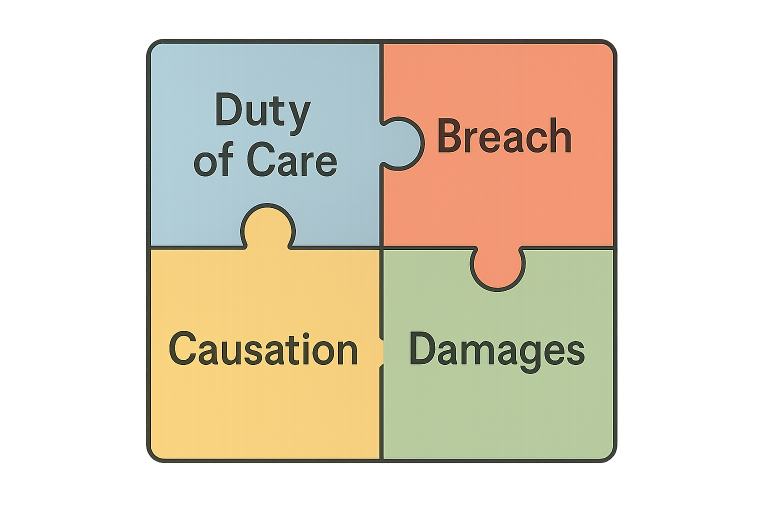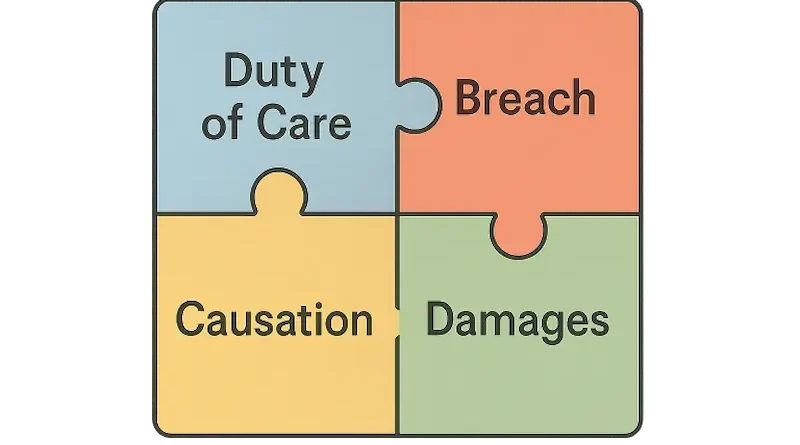How to Prove Liability in a Nevada Personal Injury Case
When you’re injured because of someone else’s careless or reckless actions in Nevada, it’s vital to prove their liability if you want to recover compensation for your losses. Identifying and establishing who is at fault is often the most crucial step in the legal process. Working with experienced Henderson personal injury lawyers can significantly improve your chances of building a successful case and obtaining fair compensation. Understanding the legal requirements and necessary evidence can help injured parties avoid common pitfalls and streamline the claims process. In Nevada, negligence is the foundation for personal injury claims. Proving negligence involves duty of care, breach of duty, causation, and damages. Understanding these elements and Nevada-specific regulations is crucial for preparing successful claims.

Understanding Negligence
Most Nevada personal injury cases are based on negligence—a legal principle that holds individuals or entities responsible for harm caused by failing to act with reasonable care and caution. To win your case, you must prove that the other party’s negligence directly led to your injury. This involves meeting four distinct elements: duty of care, breach of that duty, causation, and resulting damages. Failing to satisfy even one of these elements can undermine your claim.
Duty of Care
The first requirement is to demonstrate that the person or entity responsible owed you a duty of care. This legal obligation arises in numerous scenarios—a driver must operate their vehicle safely, businesses must maintain hazard-free premises, and doctors must provide competent care to patients. The particulars of the duty depend on the nature of the relationship and the circumstances involved.
Breach of Duty
Once a duty of care is identified, you must show the defendant breached it by acting—or failing to act—in a way a reasonably prudent person would not. Examples include running a red light, leaving dangerous spills unattended in a store, or neglecting established safety rules. Proving a breach often requires showing either direct violations of statutes or generally careless behavior that resulted in harm.
Causation
It’s not enough to prove someone was careless—you must also establish that their misconduct was the actual and proximate cause of your injury. This means connecting the dots between the defendant’s actions and the resulting harm. Medical records, expert witness testimony, and detailed accident reconstructions often play a critical role in proving causation.
Damages
The fourth element—damages—requires tangible proof of the losses you suffered as a direct consequence of the defendant’s negligence. Damages may be economic (such as medical bills, lost income, or property loss) or non-economic (including pain, suffering, or diminished quality of life). Keeping records of every cost associated with your injury is essential for substantiating your claim and maximizing potential compensation.
Gathering Evidence
Evidence is the cornerstone of every personal injury claim. Robust documentation not only proves your case but also defends against challenges by the opposing party or their insurance company. Effective forms of evidence include:
- Medical Records: Collect all records, charts, and invoices that confirm the nature, cause, and extent of your injuries.
- Photographs and Videos: Take clear photos or videos of the accident scene, visible injuries, damage, and contributing conditions.
- Eyewitness Statements: Obtain statements from individuals who witnessed the incident or can describe the hazardous conditions present.
- Official Reports: Accident, police, or incident reports provide an objective account of what happened and can corroborate your version of events.
Always back up documents and gather information as soon as possible. In some cases, expert witnesses in fields like medicine or accident reconstruction can clarify complex details for the court or insurance adjusters.
Nevada-Specific Laws
Nevada’s legal landscape contains critical rules that can impact a personal injury claim. Under NRS 41.133, for instance, if someone is criminally convicted for conduct connected to your injury, that conviction acts as conclusive proof of liability in a related civil case. This powerful statute can eliminate the need for further debate about who was at fault in some situations. Nevada also applies a modified comparative negligence rule. If you are less than 50% responsible for your injuries, you may recover compensation, but your award will decrease in proportion to your share of fault. Being 50% or more at fault eliminates eligibility for damages.
Understanding how these rules apply to your specific situation is crucial, as errors can result in lost compensation or dismissed claims. When in doubt, consult a legal expert familiar with Nevada regulations to ensure you don’t jeopardize your rights.
Conclusion
Proving liability in a Nevada personal injury case requires a firm grasp of negligence principles and a rigorous approach to evidence collection. Staying informed about state-specific rules—like comparative negligence and liability tied to criminal convictions—is equally important. With the right strategy and guidance, you can navigate the legal system confidently and pursue the compensation you deserve after a life-changing injury.

